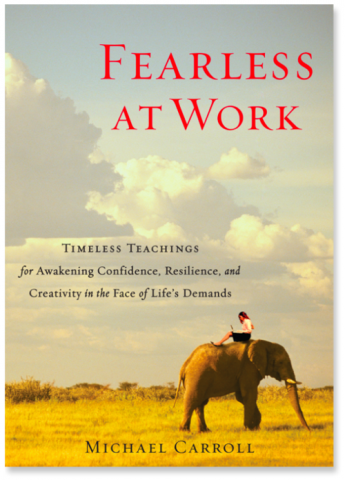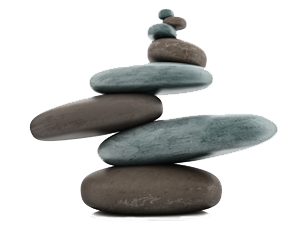
Here in this review of Fearless at Work, Frater Acher, a master schooled in the ancient arts of “divine magic”, explores the nuances of overcoming cowardice and living a noble and dignified life.
Fearless at Work actually isn't a book about work. It's a book about cowardice. The kind of cowardice most of us comfortably have forgotten about, and to aid that process we conveniantly began to call it everyday life. It's the cowardice that masks itself as numb acceptance or bitter withdrawal, as grudging tolerance or thick-skinned suffering. Fearless at Work is a book about the siege-mentality that most of us have come to live in these days: the mental state that perceives life as a constant attack of unpredictable forces, an onslaught against our well-crafted plans, against what we believe to deserve and against the life-script we have imagined for ourselves. It's the kind of cowardice that cannot accept life in its raw and essential form - with all its pain and all its beauty - and therefore constantly feels betrayed and under attack.
I don't know Michael Carroll and I don't know exactly what the traditions are that he pulls upon in equipping us with the remedies against such self-inflicted path of destruction. At the end of his book he calls out four 'fearless traditions' as his main sources: the Kagyu and Nyingma lineages of Tibetan Buddhism, the Shamballa Warrior path, the Sun Tzu Military practices and the Kasung-Command Protection Methods. I have only vague ideas of what those terms stand for and actually no intend to dig deeper into their origins or how they might be presented by other authors. Why, you might ask, if I am so powerfully blown away by this book?
Truth be told, I hold a deep scepticism against Buddhist teachers/ authors who come forth to heal the Western world through ancient Eastern meditation techniques. In his excellent book Michael Carroll skillfully avoids the two main reasons of such scepticism:
- Most traditional Buddhist techniques require the practitioner to have at least a solid expertise in meditation (i.e. mental stillness and centerdness) to actually work. If the people who needed the advise had enough self-discipline and mental stability to sit down several times a week to build their meditation practice they probably wouldn't need any advise in the first place. So talking to them about the great things we can achieve once we have settled into a smooth rhythm of daily or weekly practice often just results in rubbing salt into their wounds or in a narcissitic way of showing off one's superior life skills.
- Most traditional Buddhist techniques approach life from a perspective that it unfolds its true beauty only once we either withdraw from from life in a state of unattached observation or immerse ourselves into it in a state of complete single-pointed awareness (which in essence is the same). Both of these perspectives present a worldview that our ordinary state of life somehow is broken, and now requires such mental crutches in order to be fixed and brought back to an acceptable level. Such a worldview is deeply at odds with how I look at life as a gnostic-shaman.
Here is the heart of the problem as I see it and the challenge Carroll approaches with such unique skill: The mind of most people is a cage built from misguided premises and ideas about what it takes to happily exist in this world. Asking them to step out of this cage and to look at it from a distance (as is possible through the aid of the right mental or spiritual techniques), will sound crazy to them and only increase their suffering. What they need is not more proof-stories of some adepts or master-practitioners who have left the cage successfully before them. Before their journey even can begin, what they need first and foremost are new, more healthy ideas about life. Ideas that can replace their existing self-destructing ones.
See, every metal bar in that cage we sit in all by ourselves is nothing but a cognitive concept. These ideas do not exist, except for in our minds. Yet, they are powerful dogmas, so deeply held we cannot change them anymore at will. What upholds these believes is the way we have come to look at the world. The most powerful tool we can be given, therefore, is an unfamiliar idea. Something that knocks us off centre - and once we have pulled our minds together again still leaves our orientation slightly altered. The more often this process is repeated - the more often we allow such new ideas to knock us off centre - the more flexible the sockets of the metal poles become. Until one day they'll be loose enough to be re-arranged - and for us to build a door through which we can walk right out of our old lives. Should we choose to.
I recommend to be careful with Michael Carroll's book. Only read it if you are willing for the poles of your cage to turn a little loose. For that you will not even need to sit down and medidate. Because his book is just so good and a true pandora's box - filled to the brim with unfamiliar ideas. The best thing for me personally about them was: most of them come stripped free of any Buddhist-terminology or Chinese warrior speak. Most of these ideas actually wear street-clothes or just seem to return from the grocery store. And this is the trick Carroll achieves like no other author I have read in the last six to eight years: he sneaks these new ideas through the metal poles inside our cage, he presents them so straight forward ordinaryly as if they had already always been with us. And right when we see them for what they are, they'll knock us off centre....

